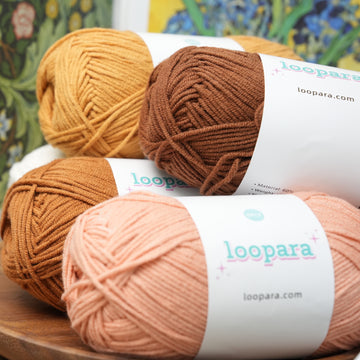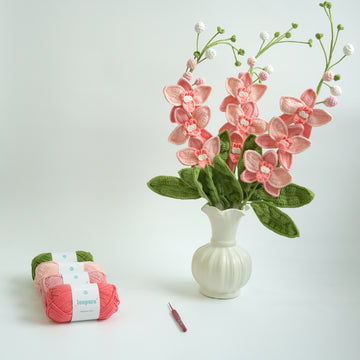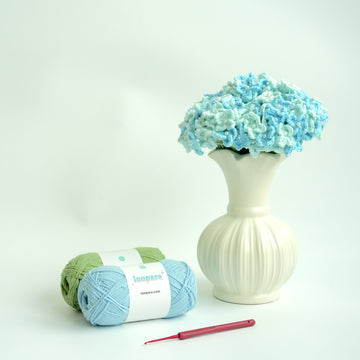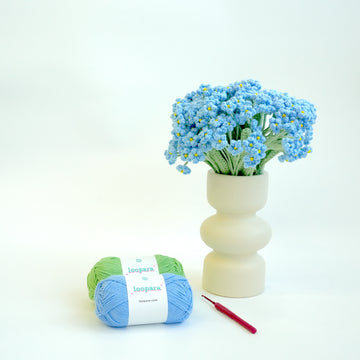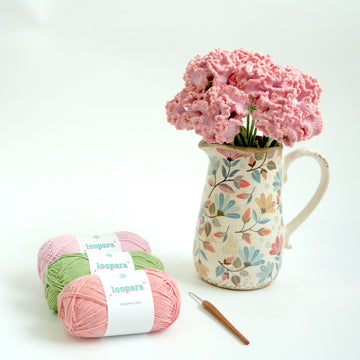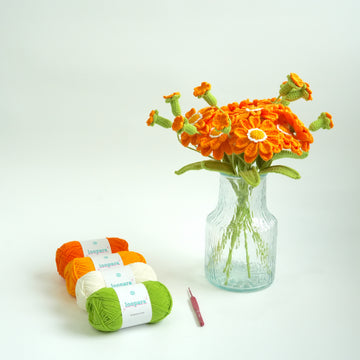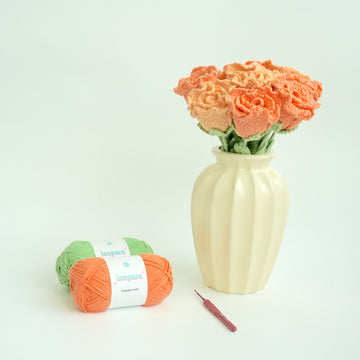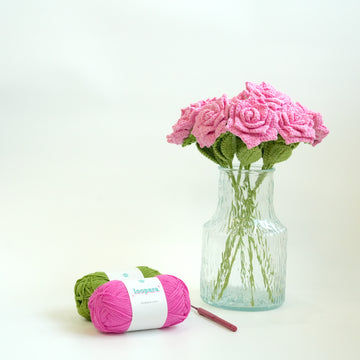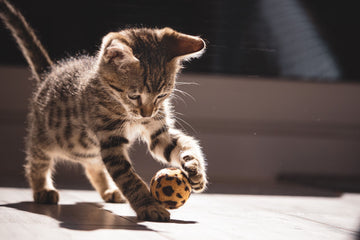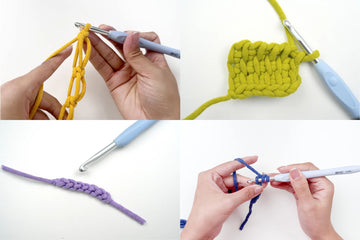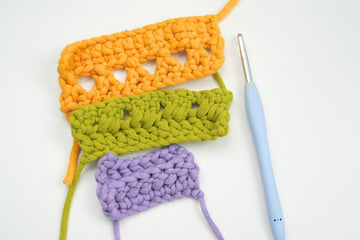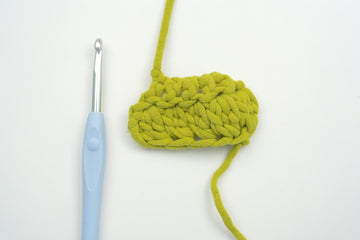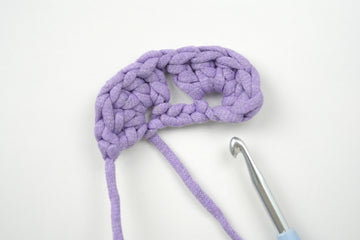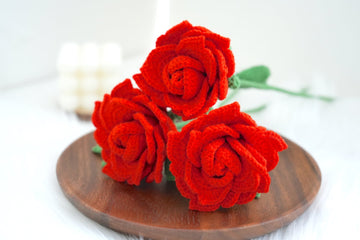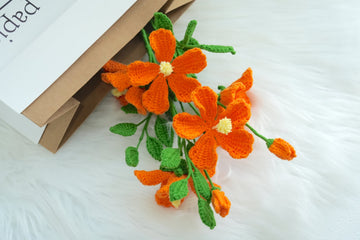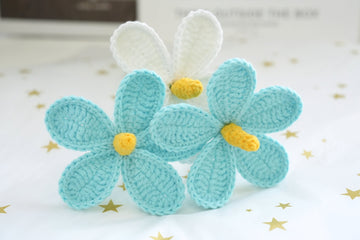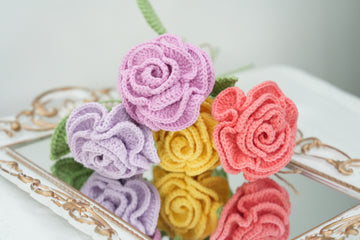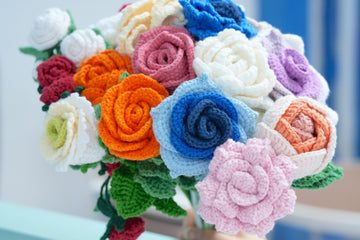Alright, crochet pals! Let's chat about the Chain Stitch, the ultimate building block of the crochet world. You'll see it in patterns as "ch" – short and sweet, just like the stitch itself!
What's the deal? The chain stitch is like the alphabet of crochet. It's the starting point for almost every project, creating a series of loops that form the foundation of your work.
This little powerhouse isn't just for beginnings. It's great for making spaces, borders, and even standalone decorations. It's the multitool in your crochet toolkit!
Feeling nervous? Don't sweat it! We've got crystal-clear instructions, step-by-step images, and a video tutorial coming up. You'll be chaining like a pro before you know it!
Pin for later
Hey crochet buddy, pin this chain stitch tutorial – it's the first step to unlocking a world of amazing projects!

Chain Stitch Symbol

Chain Stitch Video Tutorial
Materials Needed
- Yarn: The recommended is 5 mm yarn. The reason why we chose this thick yarn is to make teaching easier. For beginners practicing, thicker yarn is also recommended.
- Hook: To match 5 mm yarn, a 6 mm hook is the best pairing.
How to ch Stitch – Step by Step for Beginners
Method 1: Starting with a Slip Knot

Step 1. Make a loop in the yarn.

Step 2. Place it on your crochet hook and pull to tighten.
Note: This knot doesn't count as a stitch.
Method 2: Starting without a Slip Knot

Step 1. Position your crochet hook under the yarn.

Step 2. Rotate the hook counterclockwise with your right hand.

Step 3. Pinch the crossed yarn with your left thumb and middle finger.

Step 4. With the hook above the yarn, yarn over counterclockwise and pull through to create a loop. Tighten the loop.
Note: This doesn't count as a stitch.
BLO vs FLO vs Stitches Back Bump

BLO: The back loop (BLO) is the loop furthest from you.

FLO: The front loop (FLO) is the loop closest to you.

Stitches Back Bump: Turn your work over. The raised bump on the back is called the "third loop" or "stitches back bump".
Common Problems and Solutions
Why is it called chain stitch?
The chain stitch gets its name from its appearance – it looks like a series of interlocking loops, similar to a metal chain. As you create each stitch, it links to the previous one, forming a continuous "chain" of yarn. This visual similarity to a chain makes the name both descriptive and intuitive. The chain stitch is fundamental in crochet, serving as the starting point for most projects and creating a flexible, adaptable foundation for other stitches to build upon.
Why is my chain stitch not straight?
If your chain stitch isn't straight, don't worry – it's a common issue! Several factors could be at play:
- Inconsistent tension: Pulling too tight or leaving too loose can cause unevenness.
- Twisting the chain: Accidentally turning your work can create a spiral effect.
- Uneven yarn thickness: Some yarns have natural variations.
- Hook size: Using the wrong size hook can affect straightness.
- Practice: Like any skill, it takes time to perfect.
Try maintaining steady tension and avoiding twists. With practice, your chains will straighten out!
Why can't I chain stitch?
Don't worry if you're struggling with chain stitch – many beginners face challenges. Here are some common reasons:
- Tension issues: Holding yarn too tight or loose.
- Incorrect hook grip: Awkward holding can hinder movement.
- Yarn slipping: Difficulty controlling the yarn.
- Confusion with the process: Misunderstanding the steps.
- Wrong yarn/hook combination: Mismatch can make stitching difficult.
Why is my chain stitch so small?
- Tension: You might be pulling the yarn too tight.
- Hook size: Your hook may be too small for the yarn you're using.
- Yarn weight: You could be using a thinner yarn than expected.
- Technique: You might be making the loops too close together.
- Comparison: Your stitches may actually be the right size, but look small compared to other stitches.
Practice Project Suggestions
Now that you know how to make a chain stitch, I bet you’re eager to practice. Here are some simple beginner free patterns that start with a chain stitch:
- Crochet Tulip Leaf
- Crochet Sunflower Leaf
- Crochet Fern Leaf
- Crochet Eucalyptus Leaf
- Crochet Serrated Leaf
FAQ
What is chain stitch used?
Chain stitch is the foundation of crochet, serving multiple purposes. It's used to start most projects, create spaces in patterns, form turning chains between rows, and make decorative borders. It's also essential for buttonholes, joining pieces, and can even be used as standalone decorations. Whether you're a beginner or expert, chain stitch is a versatile and indispensable technique in crochet.
What is the difference between chain stitch and embroidery?
Chain stitch is a specific technique used in both crochet and embroidery. In crochet, it's a foundational stitch made with a hook to create a chain of loops. In embroidery, it's one of many decorative stitches made with a needle to form a chain-like pattern on fabric.
Embroidery, however, is a broader craft involving decorating fabric with needle and thread using various stitches, including but not limited to chain stitch. It encompasses a wide range of techniques and styles for creating intricate designs on fabric.
Which type of stitch is similar to chain stitch?
Several stitches share similarities with the chain stitch:
- Foundation Single Crochet (FSC): Creates a chain and single crochet simultaneously.
- Slip Stitch: A low-profile stitch that can create a chain-like effect.
- Linked Stitches: Connect to previous rows similar to chains.
- Romanian Cord: A tubular chain-like structure.
- Chainless Foundation: Alternative starting methods that mimic chains.
- Crochet Cord: Creates a rope-like chain.
These stitches offer alternatives or variations to the traditional chain stitch, each with unique characteristics and applications in crochet projects.
Are split stitch and chain stitch the same?
Split stitch and chain stitch, while both used in embroidery, are distinct techniques:
Chain stitch creates a series of looped stitches resembling a chain. It's made by bringing the needle up through the fabric, then back down near the entry point, leaving a small loop. The needle then comes up again inside this loop to create the chain effect.
Split stitch, however, involves bringing the needle up through the middle of the previous stitch, splitting the threads. This creates a solid line with a braided appearance.
While both can create linear designs, they produce different textures and effects in embroidery work.
What is the best thread for chain stitch?
The best thread for chain stitch depends on your project and desired outcome. For crochet, medium-weight yarns like worsted or DK are ideal for beginners as they're easy to work with and see. Cotton thread is excellent for delicate work.
In embroidery, stranded cotton floss is popular for its smooth texture and wide color range. Pearl cotton offers a shinier finish and is great for bold designs.
For both, choose a thread that complements your fabric or project weight, and ensures the stitches are visible and maintain their shape. Ultimately, the "best" thread is one that suits your specific project needs and personal preference.
More Beginner Crochet Stitch Tutorials
Dive deeper into crochet with these fundamental stitches. Each tutorial will help you expand your skills and create more diverse projects.
- Single Crochet (sc)
- Double Crochet (dc)
- Treble Crochet (tr)
- Single Crochet 2 Together (sc2tog)
- Single Crochet 3 Together (sc3tog)


